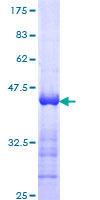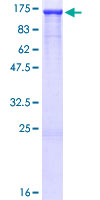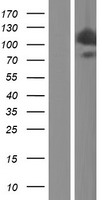order histories, retained contact details for faster checkout, review submissions, and special promotions.
Forgot password?
order histories, retained contact details for faster checkout, review submissions, and special promotions.
Locations
Orders Processing,
Shipping & Receiving,
Warehouse
2 Shaker Rd Suites
B001/B101
Shirley, MA 01464
Production Lab
Floor 6, Suite 620
20700 44th Avenue W
Lynnwood, WA 98036
Telephone Numbers
Tel: +1 (206) 374-1102
Fax: +1 (206) 577-4565
Contact Us
Additional Contact Details
order histories, retained contact details for faster checkout, review submissions, and special promotions.
Forgot password?
order histories, retained contact details for faster checkout, review submissions, and special promotions.
HIP1
huntingtin interacting protein 1
Plays a role in clathrin-mediated endocytosis and trafficking. Involved in regulating AMPA receptor trafficking in the central nervous system in an NMDA-dependent manner. Enhances androgen receptor (AR)-mediated transcription. May act as a proapoptotic protein that induces cell death by acting through the intrinsic apoptosis pathway. Binds 3-phosphoinositides (via ENTH domain). May act through the ENTH domain to promote cell survival by stabilizing receptor tyrosine kinases following ligand-induced endocytosis. May play a functional role in the cell filament networks. May be required for differentiation, proliferation, and/or survival of somatic and germline progenitors.
| Gene Name: | huntingtin interacting protein 1 |
| Synonyms: | HIP1, HIP-1, HIP-I, ILWEQ |
| Target Sequences: | NM_005338 NP_005329.3 O00291 |
Publications (11)





If you do not find the reagent or information you require, please contact Customer.Support@LSBio.com to inquire about additional products in development.









